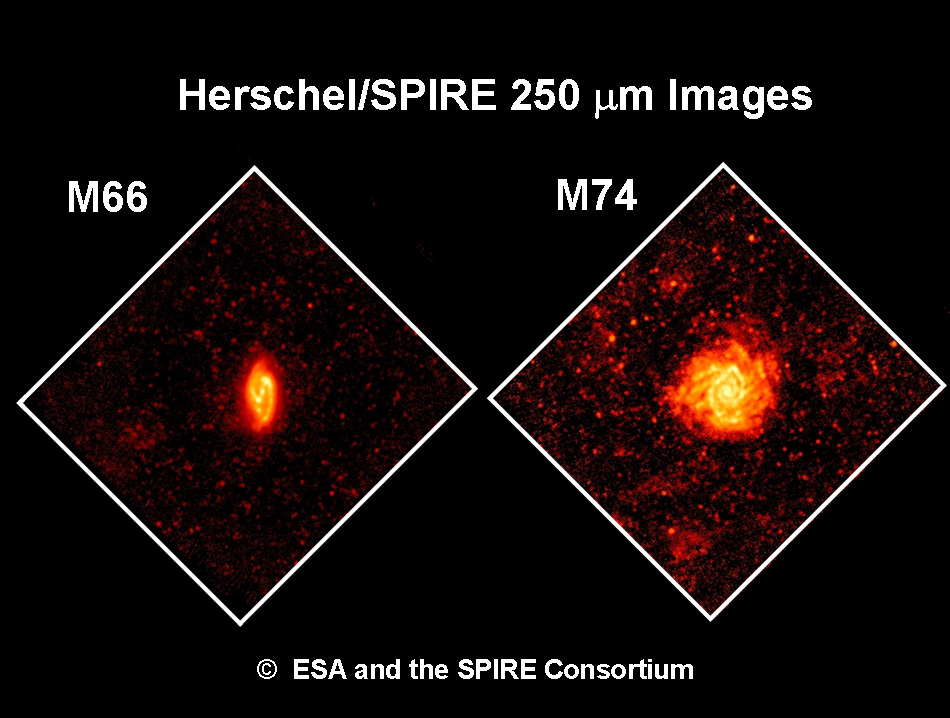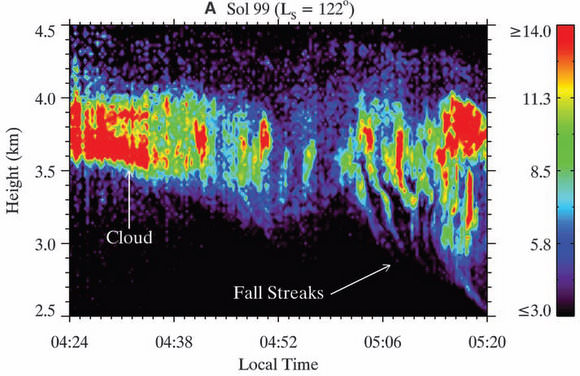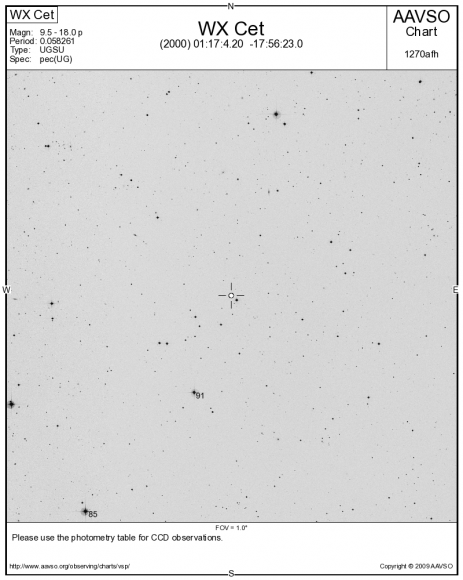Astro 'Shop of the Week
We've got some extremely creative readers of Universe Today who really know their way around image editing software. One of those people is Alan Lipkin, who submitted his latest Photoshop handiwork to us, which he calls "Ballerina Galactica." Of course, you'll recognize the tutu as the Sombrero Galaxy and the backdrop as the Wild Duck Star Cluster. The big star and earring are both Sirius. Wonderful!
Alan's image gave me an idea: Why not have a regular feature where readers can submit astronomical images they have messed around with using image editing software? A few rules: the images submitted must be space or astronomy related and they must be in good taste. The images can be submitted to Nancy here. We're looking forward to seeing and sharing the creative side of our readers!
Shuttle is Go For Launch, But is the Weather?
With the fuel leak apparently fixed, space shuttle Endeavour is '"go" for launch for the STS-127 mission. But the weather could force another delay. Forecasters predict a 60 percent chance thunderstorms on Saturday evening at Kennedy Space Center, and Endeavour's launch is scheduled for 7:39:35 p.m. EDT. "Bottom line from the team, everybody's go for launch, we have no major issues at all," said Mike Moses, director of shuttle launch integration at the Kennedy Space Center. "We're in really good shape for launch. We do have some challenges with the weather, but we'll just work through those."
(...)
Read the rest of Shuttle is Go For Launch, But is the Weather? (116 words)
Herschel Telescope First Light Images Released

Herschel "first light" images of M66 and M74. Credits: ESA and the SPIRE Consortium
The Herschel telescope has now turned on all its instruments, taking a few "first light" images with each instrument of galaxies, star-forming regions and dying stars. Herschel astronomers said they were "staggered" by the results, saying "these observations show that Herschel’s instruments are working beyond expectations. They promise a mission of rich discoveries for waiting astronomers." Above are images taken with Herschel’s Spectral and Photometric Imaging Receiver (SPIRE, of two galaxies, M66 and M74. The galaxies showed up prominently, providing astronomers with their best images yet at these wavelengths. And what's that in the background? Other more distant galaxies!
(...)
Read the rest of Herschel Telescope First Light Images Released (435 words)
Explore Tranquility Base With New Interactive Apollo 11 Feature
Where were you on July 20, 1969? If you don't remember or weren't born yet you can re-live the first walk on the Moon with a new interactive feature on NASA's website. Listen to the audio, pan and explore the landing site, and go inside the Eagle lunar lander (not a lot of room in there!). Looking around Tranquility Base with the pan feature is a little counter-intuitive (opposite of what you do on Google Maps) but fun, nonetheless.
Look for lots of other fun ways to celebrate the 40th anniversary of Apollo 11 during the next couple of weeks. Google and NASA announced they will be unveiling something exciting on July 20, and word on the street is that it will be Google Moon in 3-D, made possible in part by the newly arrived Lunar Reconnaissance Orbiter.
Earliest Stars Came in Pairs, New Simulation Shows

Most stars exist in binary pairs today — and new research indicates that may have been true for a very long time. This simulation of a primordial star forming region about 200 million years after the Big Bang shows two pre-stellar cores of more than five times the mass of the sun each. The cores formed at a separation of 800 times the distance from the Earth to the Sun, and are expected to evolve into a binary star system.
Most previous simulations of the early universe, in which clouds of primordial gas collapsed to form the first luminous objects, suggest that early stars formed separately from each other.
(...)
Read the rest of Earliest Stars Came in Pairs, New Simulation Shows (142 words)
Beautiful Chaos
Can you imagine living in this region of space? Just think of the beautiful views you'd have in the sky – that is, if you survived the chaos as one galaxy is passing through the core of three other galaxies at ridiculous (ludicrous?) speeds (3.2 million km per hour / 2 million miles per hour) generating a shock wave of gas and X-rays.
(...)
Read the rest of Beautiful Chaos (256 words)
NASA Science News for July 10, 2009
When astronauts travel through space, the human heart loses something it seems to need: the Earthly pull of gravity. Is this a problem? NASA is launching a new study to find out.
FULL STORY at
http://science.nasa.gov/headlines/y2009/10jul_cardio.htm?list1035898
NASA Science News for July 9, 2009
Amateur astronomers have photographed NASA's LCROSS spacecraft en route to an October crash landing on the Moon. Observers say the spacecraft is surprisingly easy to photograph, and NASA hopes more amateurs will give it a try.
FULL STORY at
http://science.nasa.gov/headlines/y2009/09jul_lcross1.htm?list1035898
Going to Mars Together

From the "this makes complete sense" department: NASA and ESA have established an initiative to make future explorations of Mars a joint venture. The ESA Director of Science and Robotic Exploration, David Southwood, met with NASA’s Associate Administrator for Science, Ed Weiler at the end of June and created the Mars Exploration Joint Initiative (MEJI) that will provide a framework for the two agencies to define and implement their scientific, programmatic and technological goals at Mars. The initiative includes launch opportunities in 2016, 2018 and 2020, with landers and orbiters conducting astrobiological, geological, geophysical and other high-priority investigations, leading up to a sample return mission in the 2020s.
(...)
Read the rest of Going to Mars Together (98 words)
New Technique Finds Farthest Supernovae

Two of the farthest supernovae ever detected have been found by using a new technique that could help find other dying stars at the edge of the universe. The two cosmic blasts occurred 11 billion years ago. The next-farthest large supernova known occurred about 6 billion years ago. Jeff Cooke from the University of California Irvine said this new method has the potential to allow astronomers to study some of the very first supernovae and will advance the understanding of how galaxies form, how they change over time and how Earth came to be.
(...)
Read the rest of New Technique Finds Farthest Supernovae (288 words)
Observing Alert! Outburst of Dwarf Nova WX Ceti
According to AAVSO Special Notice #161 posted today by M. Templeton, dwarf nova WX Ceti is now in outburst and has been recorded at magnitude 12.62. There's a lot to be learned about this cool little star… (...)
Read the rest of Observing Alert! Outburst of Dwarf Nova WX Ceti (703 words)
Omega Nebula Struts its Stuff in New, Multicolored Image

The Omega Nebula, a stellar nursery 5500 light-years away towards the constellation Sagittarius (the Archer), is looking positively dashing in this new image released today by the European Organisation for Astronomical Research in the Southern Hemisphere (ESO). The subtle color shades across the three-color composite image comes from the presence of different gases (mostly hydrogen, but also oxygen, nitrogen and sulfur) that are glowing under the fierce ultraviolet light radiated by hot young stars.
(...)
Read the rest of Omega Nebula Struts its Stuff in New, Multicolored Image (267 words)
How Often Are New Stars Born in the Milky Way?
Stellar nurseries can be found in giant clouds of molecular gas and dust scattered throughout our galaxy. The Octo-mom has nothing on these stellar nurseries, as these regions can produce multiple stars at once – into the hundreds at a time. How often does this happen? On average, one new star is born somewhere in our Milky Way galaxy per year, astronomers estimate. But with the newborns arriving together in dense clusters, stars aren't born, or created, very often in the Milky Way. Recently, astronomers took a close look in infrared at what was happening inside a giant stellar nursery called RCW 38 and saw hundreds of stars in different stages of development. What they found was significant, as this represents the first time a massive cluster other than the one in the Orion Nebula has been studied so precisely.
(...)
Read the rest of How Often Are New Stars Born in the Milky Way? (254 words)
Phoenix Lander Team: It Snows at Night on Mars

It snows on Mars. This occurs, at least in the northern arctic region where the Phoenix lander set up camp in 2008. Science teams from Phoenix were able to observe water-ice clouds in the Martian atmosphere and precipitation that fell to the ground at night and sublimate into water in the morning. James Whiteway and his colleagues say that clouds and precipitation on Mars play a role in the exchange of water between the ground and the atmosphere and when conditions are right, snow falls regularly on Mars.
(...)
Read the rest of Phoenix Lander Team: It Snows at Night on Mars (611 words)
By Gamma-Rays Alone: Fermi Raises the Curtain on 16 New Pulsars

For the first time, NASA’s Fermi Gamma-ray Space Telescope has spotted a new group of pulsars using only their gamma-ray emissions, in the absence of radio signals beamed to Earth. The 16 new objects are reported in this week's edition of Science Express, in a study based out of the University of California in Santa Cruz.
(...)
Read the rest of By Gamma-Rays Alone: Fermi Raises the Curtain on 16 New Pulsars (490 words)





